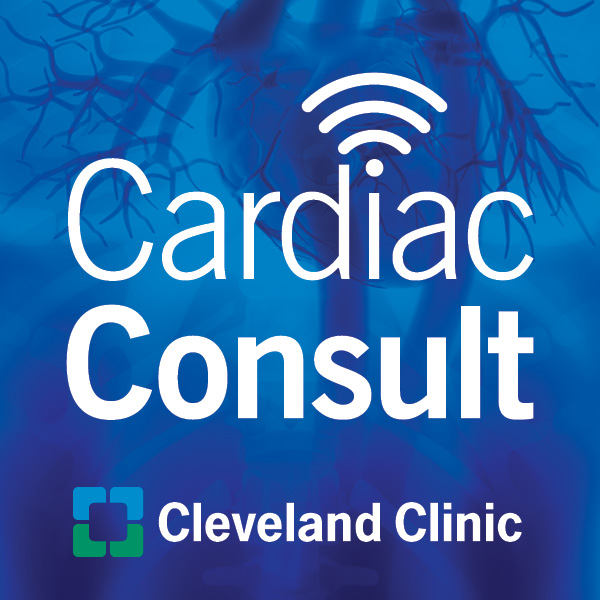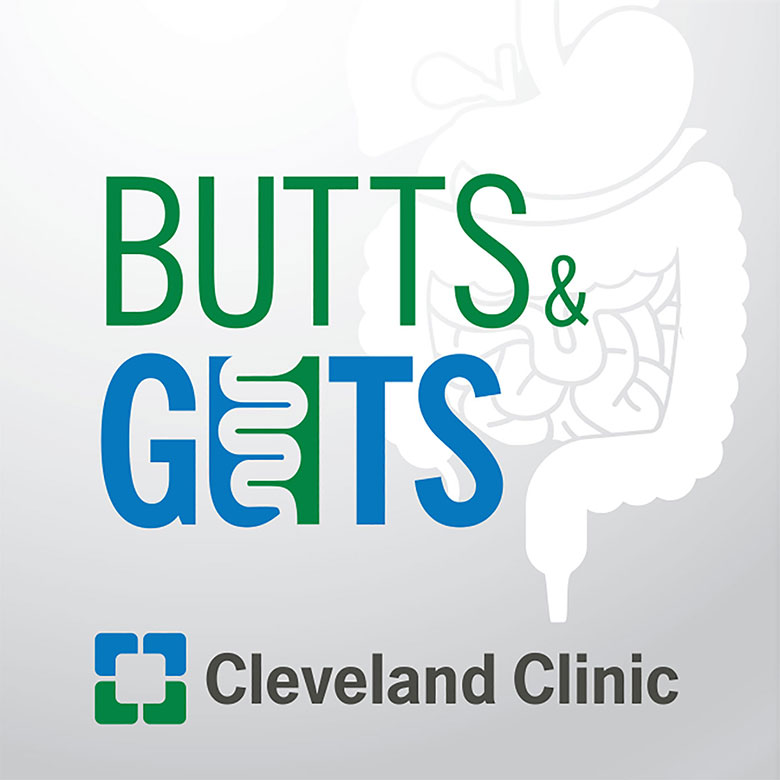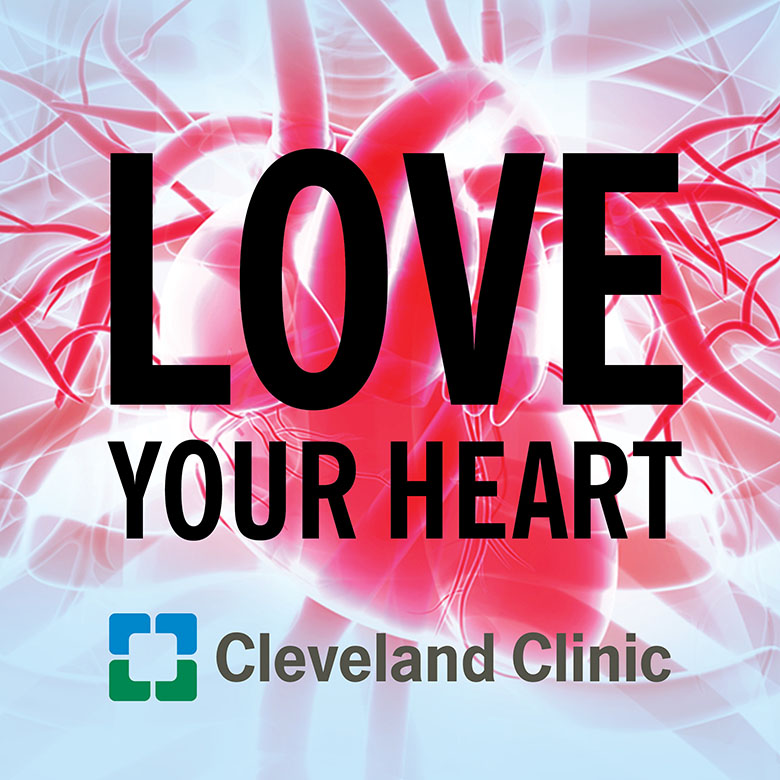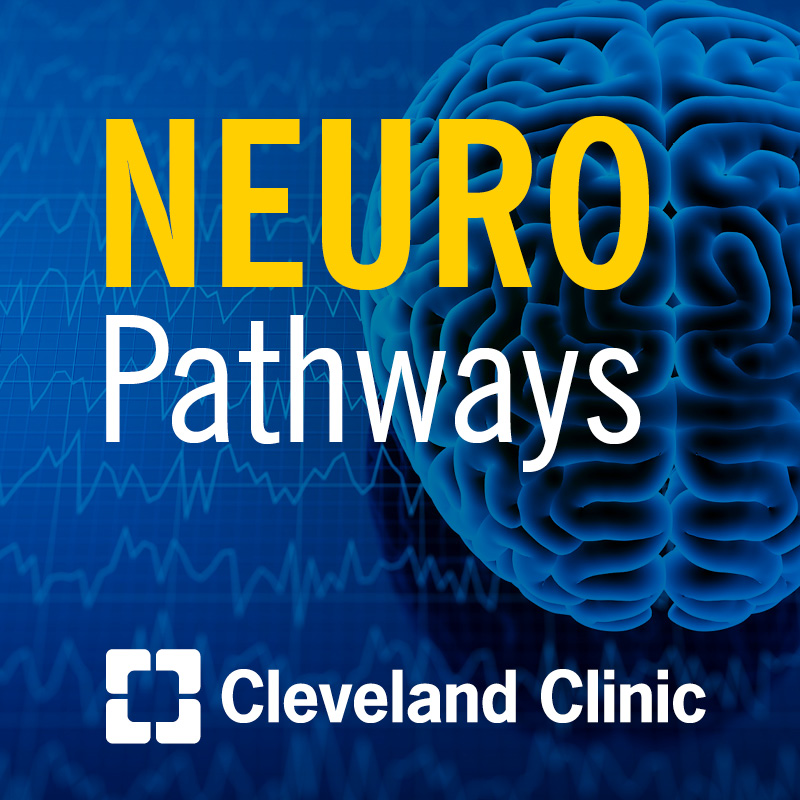Talking Tall Rounds®: Complex Congenital Transplantations

Dr. Eileen Hsich highlights the Multidisciplinary Team Approach to Complex Congenital Transplantations Tall Rounds® session.
Enjoy the full Tall Rounds® & earn free CME
- Case Presentation: John Costello, MD
- ACHD Considerations and Pre-Transplant Optimization: Joanna Ghobrial, MD
- Heart Failure Indications and Treatment Options: Sanjeeb Bhattacharya, MD
- Assessing the Liver: Robert O'Shea, MD
- Surgical Techniques for Complex Congenital Transplantations
- Adult Heart and the Role of VAD Support: Michael Tong, MD
- Pediatric Heart and the Role of VAD Support: Robert Stewart, MD
- Lungs: Kenneth McCurry, MD
- Liver: Cristiano Quintini, MD
- Status and Priority Listing Update: Miriam Jacob, MD
Subscribe: Apple Podcasts | Podcast Addict | Buzzsprout | Spotify
Talking Tall Rounds®: Complex Congenital Transplantations
Podcast Transcript
Announcer:
Welcome to the Talking Tall Rounds series, brought to you by the Sydell and Arnold Miller Family Heart, Vascular & Thoracic Institute at Cleveland Clinic.
Eileen Hsich, MD:
Hi, good morning. I am so excited to be here. I'm Eileen Hsich, Medical Director For Heart Transplantation, and I'm here today for a multidisciplinary approach to complex congenital heart disease. Complex, oh my gosh. I swear, it's going to be easy. It's going to be simple and the reason why is we have the experts, the people who get together all the time and they always make it look easy. We're going to start with Dr. John Castello, who's going to give us a case he's our pediatric surgical fellow.
John Costello, MD:
Good morning. Thank you very much for this opportunity to present a complex congenital transplantation case today. This case highlights several of the unique challenges that are presented by the patient with palliated congenital heart disease. The patient that I would like to discuss this morning is a male in his late 50s, with a history of a ventricular septal defect who underwent attempted repair of that in the 1960s at the age of eight.
John Costello, MD:
During exploration via median sternotomy, more complex anatomy than previously known was encountered by the surgeons, with the finding of transposed great vessels. As such, the operation was aborted and no repair was performed at that time. His anatomy was ultimately described as being a double inlet left ventricle with subaortic stenosis and transposition of the great arteries. Clinically, he maintained adequately balanced, systemic and pulmonary circulations for the next 20 plus years.
John Costello, MD:
In his 30s, the patient was palliated with a classical atrial pulmonary Fontan, with direct connection of the right atrium to the right pulmonary artery. In the years that followed, he required an ablation for atrial flutter and a variety of transvenous and epicardial pacing systems for nodal conduction, abnormalities, and ultimately he developed progressive Fontan failure with concomitant liver failure, large volume ascites and variceal bleeding. And this was all in the setting of active hepatitis C viremia that had been transmitted via blood transfusion from the time of his prior cardiac surgeries.
John Costello, MD:
As such, he was listed for combined heart and liver transplantation at the Cleveland Clinic a little more than 20 years after his classical Fontan palliation. The transplant was complex due to the patient's coagulopathy, challenging reentry and challenging pulmonary artery anatomy and following extensive patch arterioplasty of the right pulmonary artery that was required given the classical Fontan connection the patient had. Successful bicaval heart transplantation was performed, and then this was immediately followed by orthotopic heart transplantation at the same time.
John Costello, MD:
Despite a complex operative case, the patient recovered well and has been seen at 10 years of follow-up just very recently, with normal biventricular function, minimal cardiac allograph vasculopathy and intact liver function. So in conclusion, although patients with palliated congenital heart disease are complex and require very thoughtful management throughout the course of their lives, both inside and outside of the operating room, this case certainly demonstrates that long-term successes can be achieved in these complex congenital heart transplant patients, when they're cared for by an experienced multidisciplinary team. Thank you.
Joanna Ghobrial, MD:
So, I'm going to chat a little bit about transplants in adult congenital heart disease. Now, we all know that due to surgical advances in congenital heart disease, we have a growing number of patients surviving to adulthood. There's actually more adults with congenital heart disease now than pediatric patients. These kind of patients will face a large burden of morbidity and mortality from heart failure as they get older. Many of them will require heart transplantation and not just heart, but multi-organ transplantation as well. Because of that, the Cleveland Clinic is obviously the top in the nation for cardiovascular care.
Joanna Ghobrial, MD:
Not only that, our ACHD center is an accredited, comprehensive care center by the ACHA to care for complex patients with ACHD. A lot of these patients that come to us are quite complex. They've been to other centers, they've been declined in other centers, and they come to us for a second opinion due to their complexity.
Joanna Ghobrial, MD:
It is known that improved waitlist outcomes for ACHD patients that are listed at programs with comprehensive care accreditation through the ACHA, which means if you come to a center that is ACHA accredited, that means that you will get better outcomes post-transplant. That is why the emphasis, as Dr. Costello said, is on multidisciplinary team approach. The reason why these comprehensive care centers do so well is because we've put together a big team of physicians and nurses and coordinators that can care for these complex patients.
Joanna Ghobrial, MD:
This is just a list of how many specialties can take care of one ACHD patient requiring transplant. Anything going from ACHD heart failure, both the cardiac congenital surgeon, as well as the cardiac transplant surgeon, liver transplant, hepatology, pulmonary, CT, anesthesia, and all the other subspecialties of the multiorgan dysfunction in an ACHD patient.
Joanna Ghobrial, MD:
Now, it is far more complex to do a transplant in ACHD because of the complex anatomy to begin with. You also have had multiple prior surgeries since their infancy and multiple median sternotomies, which adds to the complexity. You have multiorgan dysfunction, renal, pulmonary and hepatic, just to start with the main three that we tend to encounter. You also have concomitant medical issues, such as protein-losing enteropathy that can affect transplant process and the immune system, and anatomical issues such as collaterals that can affect transplant surgery and increase the risk of bleeding intraoperatively as well. And not to mention with any congenital heart disease patient, you have a lot of psychosocial issues that need to be dealt with.
Joanna Ghobrial, MD:
So, when you refer a patient to transplant? I will say the earlier the better. If you have poor functional capacity that is not improving, if you have volume overload, despite medical therapy, if you have progressive ventricular dysfunction, and that includes both systolic and diastolic, especially in your systemic RV patients. If you have valvular dysfunction that you cannot fix by surgery, cyanosis that you cannot intervene on. If you have intractable arrhythmias, despite all interventions, and if you have end-organ dysfunction, such as liver and renal dysfunction, and obviously PLE is one of the indications in Fontan patients. But it's important to know that delayed referral to transplantation does lead to worse outcomes. That's one of the key things that I'm want to emphasize in this talk, is that refer them earlier and they tend to do better.
Joanna Ghobrial, MD:
So, part of the pre-transplant evaluation optimization, one, detailed anatomic evaluation. I can't go in details of every patient because every patient is actually quite unique and different, but you want to understand the venous return, the pulmonary arterial branching, if they're continuous or discontinuous, if they have AVMs or not, do they have AP collaterals, or venovenous collaterals or not, and their burden. A detailed physiologic evaluation. Pulmonary vascular resistance can be quite tricky in the setting of a shunt and also in the setting of a Fontan, where it can look completely normal by numbers, but they actually do have underlying pulmonary vascular disease. And end-organ function. For example, patients with Fontan can have a normal creatinine, but they actually do have underlying CKD because they don't amount the same level of creatinine increase as another patient.
Joanna Ghobrial, MD:
You also have liver dysfunction coagulopathy. HCC in Fontan patients and HCV because of their surgeries, before we used to screen for HCV as well. Immunological status can be tricky also in PLE patients or patients that have asplenia and heterotaxy patients too.
Joanna Ghobrial, MD:
Now, there's also intraoperative care and post-transplant optimization that my colleagues will discuss in more details. So, transplant in ACHD is going to be in multiple categories but one of the biggest ones we see are the palliated single ventricle patients, the Fontan palliation that Dr. Costello talked about. You also see the transposition of the great arteries with systemic RVs, especially tetralogy of Fallot and multiple other congenital heart defects. But one of the main ones we are seeing now are the Fontan patients and they're quite complex.
Joanna Ghobrial, MD:
Mainly because the sequela of the Fontan palliation, and again, emphasis on its palliation, it's not repair, we're not fixing these patients, we're simply palliating them, is you end up with an upstream venous congestion as well as decreased cardiac output. That combination is quite critical because you end up with all these dysfunction that happen long-term, especially as they grow up. So, you get arrhythmias, PLE, plastic bronchitis, cyanosis, coagulopathy, thromboembolism, liver disease, renal disease, pulmonary vascular disease, ventricular dysfunction and VT.
Joanna Ghobrial, MD:
So, cath is one of the main tools that we use in pre-Fontan or pre-congenital heart disease optimization for transplant. It plays an important part, not just diagnostic, but also therapeutic. You can get saturations and level of cyanosis in these patients. You can also assess hemodynamics, what is their central venous pressure? What is their anti-diastolic ventricular pressure, the valvular function?
Joanna Ghobrial, MD:
You can do exercise testing, which can actually bring out your pulmonary vascular disease in some Fontan patients. You can close fenestrations if they're hypoxemic or to prevent thromboembolism, you can create fenestrations to offload venous hypertension. You can also ensure that for example, in a Fontan circuit, the entire circuit is unobstructed whether you need to stent it, angioplasty it, or not. You can close AP collaterals to decrease the risk of bleeding or you can close venovenous collateral for the same reason as well.
Joanna Ghobrial, MD:
You want to make sure that you're only closing veno/venous collaterals when it is safe to do so. These patients can decompensate if you close it at very high Fontan pressures, because it's essentially a pop-off for their high CBP. And then obviously you can also do liver biopsy. So I'm just going to go through some quick examples of some of the things that we can do in the cath lab.
Joanna Ghobrial, MD:
This is a venovenous collateral plugging with a plug. This is venovenous collateral coiling. And again, all the things that we do in the cath lab, I want to emphasize are band-aids. They're simply band-aids to make things a little bit more stable for the transplant evaluation. This is fenestration of a Fontan, so actually creating the fenestration, and you see here the balloon to create the fenestration after transeptal puncture. This is Fontan fenestration closure with Amplatzer device to decrease cyanosis and paradoxical embolism. This is AP collateral coiling and then this is branch-based stenting in a couple of patients that required do that. One is a Fontan, one is another congenital patient.
Joanna Ghobrial, MD:
Now, other than Fontan patients, you can also do interventions on the other congenital heart disease patients, such as baffle stenosis and stenting in patients that have had a Senning or a mustard repair, or a baffle leak closure, also in the same group of patients, or to the extreme patients that require TAVR and TTVR and BTT shunt closure in tet patients, for example, as also pre-transplant optimization. And obviously, liver biopsies.
Joanna Ghobrial, MD:
So, I think that the key points here are early referral for transplant evaluation. You get pre and post-transplant optimization in a comprehensive care ACHA accredited center and multidisciplinary team approach. This is one of the key things that make us have good outcomes in our group of ACHD patients. I want to give a shout out to all these amazing colleagues that I've worked with over the past few years, that have always shown up to the congenital transplant meeting at crazy times, sometimes at 6:00 or 7:00 PM, and they really put their minds and heart to figure out what's the best way to transplant each complex ACHD patient. So, thank you to all of you.
Miriam Jacob, MD:
Thank you so much. So, I will try to go a little bit quickly through this, but it's important to understand that there's been an evolution in the UNOS allocation system. UNOS was created in the mid-1980s and over time, have had different allocation systems. What's relevant is this has changed as of October 18th, 2018, to the newest allocation system. The reason for the change is we wanted to reduce weightless mortality and increase the availability of organs for the most critically ill by increasing our geographic boundaries. What is significant about the adult congenital population? They're disadvantaged in the allocation system and we've seen that in the old allocation system. I would say it's still a challenge.
Miriam Jacob, MD:
It's a heterogeneous group, single and dual ventricle physiologies. They are not optimal candidates for MCS or inotropes like our dilated patients or ischemic patients, and they do have a higher waitlist mortality.
Miriam Jacob, MD:
And when we look at waitlist survival, this is from data from the 1990s to about 2009. If you look and see, the patients who were transplanted, there's a higher number of patients or proportion of patients who are non-congenital transplanted and many who are left on the waitlist. Those who have more mortality on the waitlist tend to be men, people with albumen less than 3.5, which is really common, especially in our Fontan patients, and those who are on mechanical ventilation, which is bad for everybody, but much worse actually for congenital patients and their waitlist time is much more, on average, 152 days compared to our non-congenital patients of 119 days and this is in the old system.
Miriam Jacob, MD:
When we look at the proposal made to change the allocation system, they actually looked at what were the exception requests made for patients and the top requests in our highest status at that time 1A, the third top request was for congenital patients and for those at 1B status. The second top request was for congenitals and this is because they just didn't fit the buckets that we had.
Miriam Jacob, MD:
So when we look at, I would look at that middle column, as the old allocation system status 1A, 1B, 2, so basically our sickest patients, it's a whole group of patients put into 1A and status 1B were all our VADs and people on inotropes. So now status 1, 2, and 3 are those 1A patients are broken up a little bit more granularly. So status 1 are those patients on ECMO, non-dischargeable implanted VADs and who have VADs but have terrible arrhythmias. VT.
Miriam Jacob, MD:
Status 2 is a big group. Status 1 and 2 are really the patients we transplant nowadays. Those with intra-aortic balloon pumps up to 14 days, sustained VT, non-dischargeable VADs, VADs with device malfunction or mechanical failures, those that thrombose. Total artificial hearts and dischargeable BIVADs. And then status 3 are all our VADs who have complications, VADs for 30 days, patients who are on ECMO greater than seven days. And then status 4, the rest of our VADs, but our congenitals, our restrictives, our hypertropes have come into this category. Status 5 are combined organ patients and status 6 is everybody else. So our congenital patients, do have higher mortality on the waitlist, so they are automatically up to a 4 even if they're outpatient, compared to say, our dilateds who are at home, who are 6.
Miriam Jacob, MD:
How do you determine status? Well, the guidelines are better. We have more specific criteria as guidelines, but you can still get an exception if you feel like your patient has an urgent listing higher to those patients who are otherwise in the same status. We do this prospectively, meaning we ask for forgiveness.
Miriam Jacob, MD:
So, we do put them up to that higher status and then wait for a regional review board to review it. They can maintain your patient at that status or say, "No, that's incorrect," and they drop you down. The regional review board, so you know, are made from members of transplant centers and they have rotating duties every year to do this. We are reviewed by regional review board in another region. We don't know our review board and it's good because they don't know us either and so that there's no gain in giving us status or not giving us status.
Miriam Jacob, MD:
Going through what we do with single ventricle physiology, so the failing Fontans, all of them get to be a status 4. If they have a VAD, they automatically go to status 2. Exceptions can be considered. They can be a 1 exception, if they have a complication of that VAD. Status 2 exception is high dose inotropes, or two or more inotropes. So that means milrinone 0.5, or dobutamine 7.5, or epi 0.02 mgs per kg, or mechanically ventilated, or they're intolerant because of arrhythmias or hypotension. Because of their physiology or their anatomy, we don't have to have a Swan in place.
Miriam Jacob, MD:
Then status 3 is someone who has say, a Fontan, but has PLE, or plastic bronchitis, or circuit thrombosis. And these patients who have exceptions must be admitted to the hospital.
Miriam Jacob, MD:
Dual ventricle physiology, everybody gets status 4 automatically and then you can be upgraded to status 3 if you have risk factors where you can't get a VAD or you're on high dose inotropes, or intolerant of inotropes. These patients get worse due to worsening heart failure and arrhythmia and we can still use the conventional uplisting. So, if you have a patient who's hypotensive with high wedge, low cardiac output, you put a balloon pump in, for say, and get them status 2 listing, or if they get on ECMO, status 1 listing.
Miriam Jacob, MD:
Dual organ listing, this is complicated. Many of our patients need a second organ, whether it's lung, liver or kidney and a patient's listed separately on each list. What we find is that their ability to get organs is driven by the heart and how sick the heart is. I think most of our surgeons would agree this is usually true.
Miriam Jacob, MD:
So that makes it complicated and also we have to ask for getting that second organ. So, we have to have our OPO be on board to help us with that. If we look at changes based on the pre and post-change of the status allocation, here status at time of listing in our old system, most patients, 68%, were status 1A at the time of getting transplant. In our current system, I would say most patients are status 2 listed.
Miriam Jacob, MD:
We use a lot more balloon pumps, but there's been no difference in the use of inotropes or ventilators in these patients, or VADs. Then on this middle graph, you see in a solid line is the old system and the dash line is the new system. So, more patients are getting transplanted but waitlist survival has not changed so far. Postoperative events are pretty similar in the pre and post-system, whether it be stroke, dialysis, pacemaker, placement, or transfusion, or acute rejection. So thankfully, if we compare about the year before we had status change to now, there are more patients being listed for congenital heart disease and transplant. Most are now status 2. Waitlist time has decreased from 81 days to 49 days on average, but the distance travel to get organs has increased, which may have implications on our ischemic times. Rates of transplantation overall are higher. And thankfully, so far we have the same post-transplant survival. Thank you so much for letting me speak.
Announcer:
Thank you for listening. We hope you enjoyed the podcast. Like what you heard? Visit Tall Rounds online at clevelandclinic.org/tallrounds and subscribe for free access to more education on the go.

Cardiac Consult
A Cleveland Clinic podcast exploring heart, vascular and thoracic topics of interest to healthcare providers: medical and surgical treatments, diagnostic testing, medical conditions, and research, technology and practice issues.



